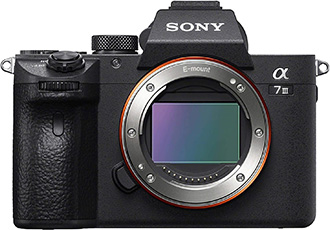
©Yuka on Safari α7 III, FE 100-400mm F4.5-5.6 GM OSS, ISO400, F8, 1/2500s
Vol.5
24/03/2025
A safari guide striving to create a place where people, nature,
and animals coexist.
Yuka Ota, South African Government-Certified Safari Guide
Thinking together about the global environment through interviews with creators working to raise awareness of environmental challenges. This time, we interviewed Yuka Ota, who is certified as a safari guide by the South African government. Life in action can be seen unfiltered on the savanna of South Africa. At the same time, it is a place where you directly experience the impact of environmental issues. Ota leads safari tours in this land, is involved in wildlife conservation activities, and continues to communicate how nature, animals, and people are connected to the ecosystem. Through the lens of her camera, Ota captures how we can contribute to the future of the planet.
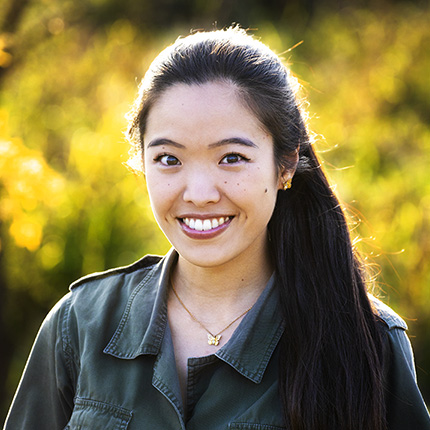
Yuka Ota
South African Government-Certified
Safari Guide
She is the first Japanese woman qualified as a safari guide by the South African government. While enrolled in the College of Tourism at Rikkyo University, she entered a South African safari guide training school. After acquiring her qualification on location, she has been active as a guide at Greater Kruger National Park since 2016. She has acquired certification as a trail guide, which even locals consider difficult to obtain, and is certified as a culture guide in all nine South African provinces. In addition to her work as a guide, she is involved in various wildlife conservation activities, such as an initiative to save animals caught in traps, a project to protect rhinos from poaching, and using GPS devices to prevent harmful interactions between people and wildlife. Her goal is to preserve the local ecosystem, and she uses podcasts, YouTube, and social media to share local information about the allure and current state of the savanna. She has also appeared on NHK and TBS’s Crazy Journey, among other TV programs. She has published Protecting Wildlife in the Savanna (Kodansha) and My Workplace Is the Savanna (Kawade Shobo Shinsha). She is also featured in middle school textbooks for fiscal 2025.
The desire to protect humans and animals
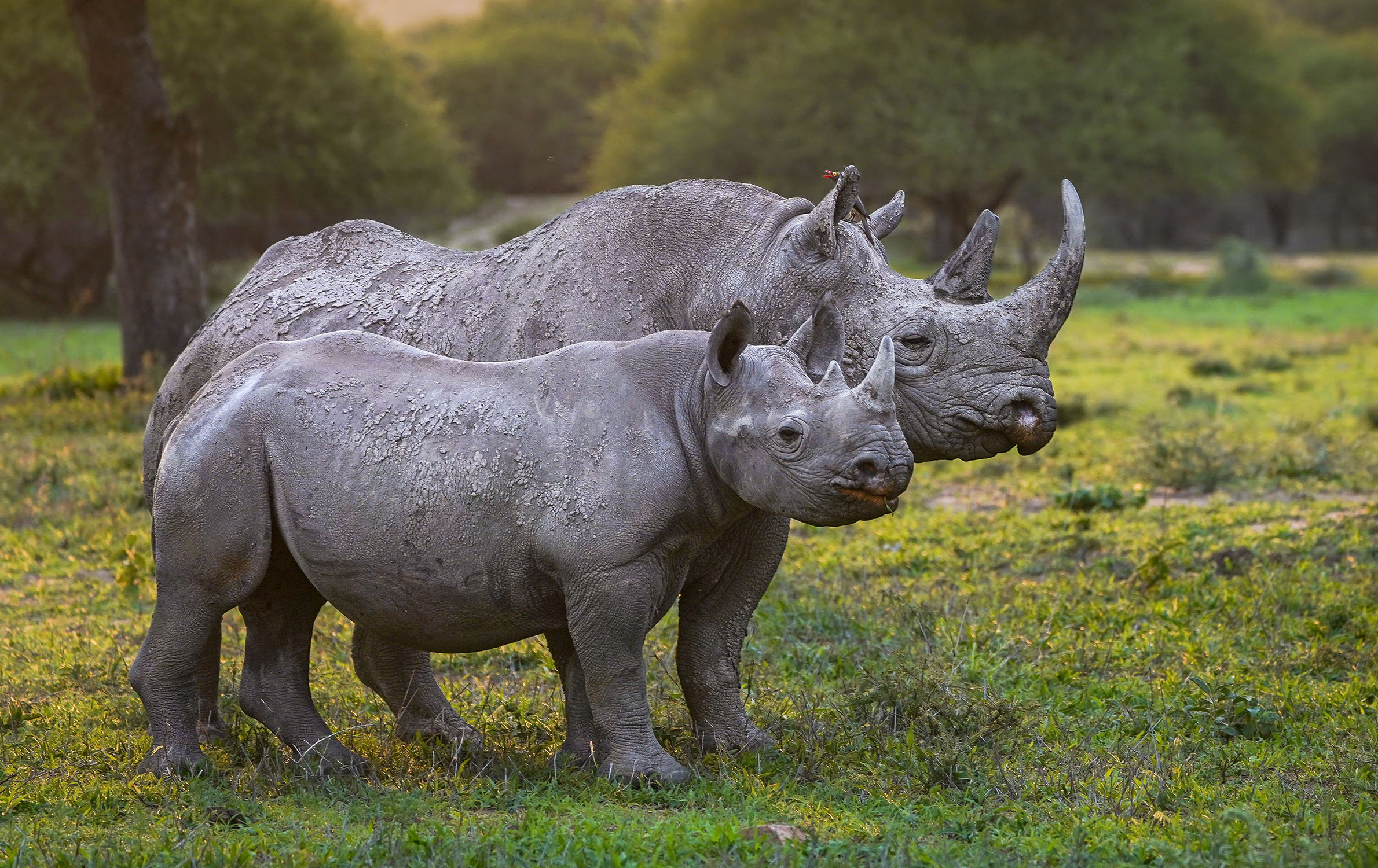
A mother rhino and calf. The savanna allows you to get up close to animals.
©Yuka on Safari α7 III, FE 100-400mm F4.5-5.6 GM OSS, ISO400, F5.6, 1/320s
What set you on the path to becoming a safari guide?
I’ve adored animals since my earliest memories. Spending my childhood playing in nature might have been a big part of this. I raised tadpoles until they became frogs and caterpillars until they turned into butterflies, and released them. The veterinarian who treated my dog when it got sick also played a major role. My first dream was to become a veterinarian because I thought that being a veterinarian was the only way to protect animals. However, I gave up on that dream because science wasn’t my strong suit. This led me to seek opportunities with environmental protection groups, NGOs, volunteer programs, and other activities focused on protecting animal habitats.
So, you never imagined a career as a safari guide back then?
That’s right. As a college student, I joined volunteer programs and worked part-time at NGOs in several countries, which one day brought me to the Republic of Botswana. Even after seeing wildlife habitats in countries around the world, when I first laid eyes on the African savanna, I knew immediately that I absolutely wanted to work in this amazing place. That was also the first time I learned about a career as a safari guide. A safari guide lives in the great savanna while protecting animals—my dream job. From then on, I knew I had to become one.
What impactful experiences did you have in the Botswanan savanna?
Compared to my experiences visiting the steppes of Mongolia, US national parks, and the jungles of Australia and Malaysia, the Botswanan savanna offers a unique sphere where wildlife and people coexist, and it moved me. Initially, I thought only animals lived on the African savanna, a realm of wildlife. However, when I went to Botswana, I saw villages on the savanna with no barriers like fences separating them from the expansive wildlife habitat around them. Seeing humans and wildlife living in harmony was moving and made me want to preserve this environment. Animals don’t perceive people riding in safari cars as friends or foes, and sometimes even walk right up to them out of curiosity. It was thrilling to realize that I could see these animals this closely. I think this is one of the most captivating aspects of Africa.
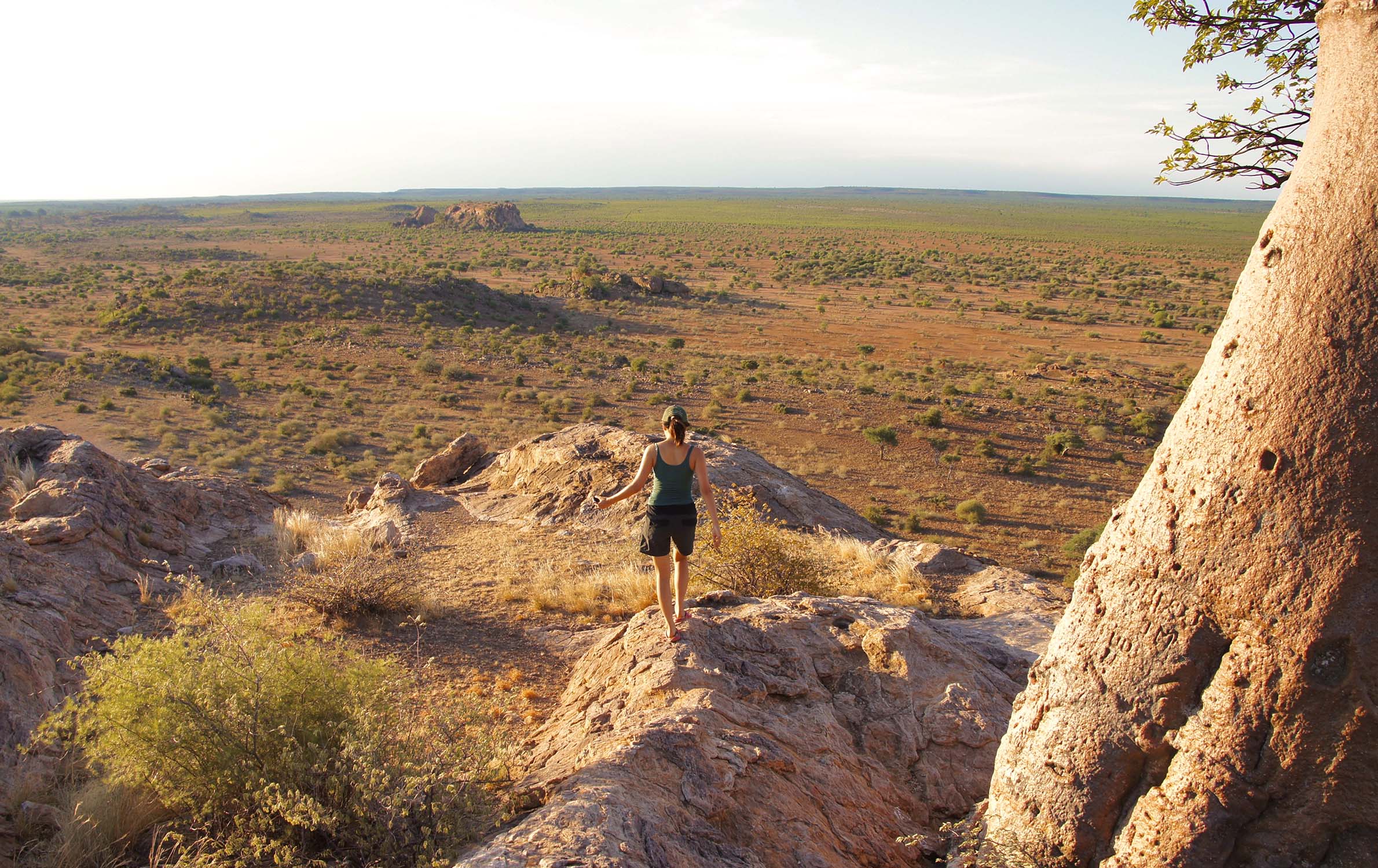
Ota strolls across the majestic plains of Botswana.
©Yuka on Safari
How did you pursue your dream job after that?
I took a year off during my third year in college and enrolled in a safari guide training school in the Republic of South Africa. Since the training courses and tests were all conducted in English, the language barrier was my first challenge. After earning my qualification, my biggest hurdle was finding a job. One major barrier was being a female guide in a male-dominated profession. On top of that, it’s incredibly difficult for a foreign national to find a job in South Africa. At first, it was so challenging that I even started looking for jobs in Japan.
Was it your initial experience in the savanna that kept you from giving up despite these challenges?
Yes, I was determined not to give up. I spent years working as a volunteer guide, believing that there had to be a way forward. I was desperate to stay in the country.
Serious clashes between people and animals living in close proximity
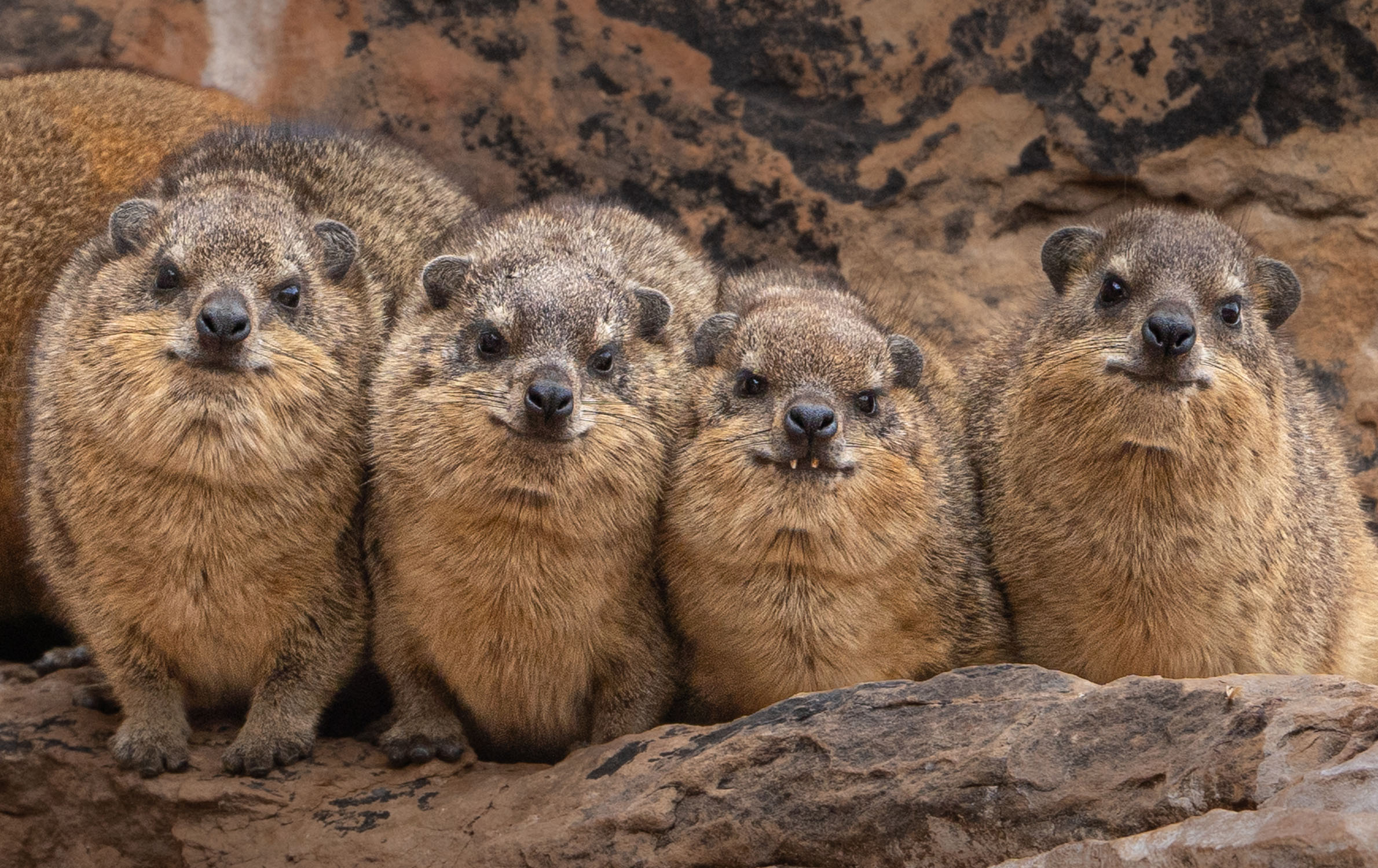
The rock hyrax is a popular animal in South Africa. Its adorable appearance melts the hearts of locals and tourists alike.
©Yuka on Safari α7 III, FE 100-400mm F4.5-5.6 GM OSS, ISO500, F5.6, 1/500s
Could you tell us about your actual work as a safari guide?
Most safari guides in South Africa work at the lodge accommodations that dot the expansive savanna. Our job is to introduce visitors to the savanna, through guided tours focused on animal watching. These tours are typically held in the morning and evening. We find animals and provide explanations about them.
The typical impression of guides is that they introduce people to fixed locations.
The typical image of a tour guide is someone who takes people to set locations and explains them. However, a safari guide works in nature, so no two tours are the same. The animals we encounter vary depending on the timing, and I provide explanations about their expressions and behaviors when we spot them. My greatest thrill comes from seeing the tour participants witness the vitality of the animals and the beauty of this natural habitat. This unpredictability might be one of the reasons I haven’t gotten bored even after ten years.
Do you have a unique approach to being a guide?
My dream is to protect animals, so I believe that informing guests on my tours about environmental protection and animal conservation is a key part of my job. Having lived in South Africa for ten years, I’ve worked to build connections with environmental NGO staff and veterinarians, allowing me to participate in conservation activities in addition to being a safari guide. Over time, I’ve earned enough trust to hold collaborative crowdfunding campaigns with conservationists and take part in other activities. One of the areas of expertise of safari guides is being able to locate animals when there’s a sighting of one caught in a trap. There’s a standard process for identifying animals in need of rescue efforts and arranging transportation for both the veterinarians and the animals. In the past few years, I’ve been entrusted with locating these animals as a guide. My unique approach is being involved in both guiding and conservation activities, whereas conventional safari guides are only involved in guiding activities.
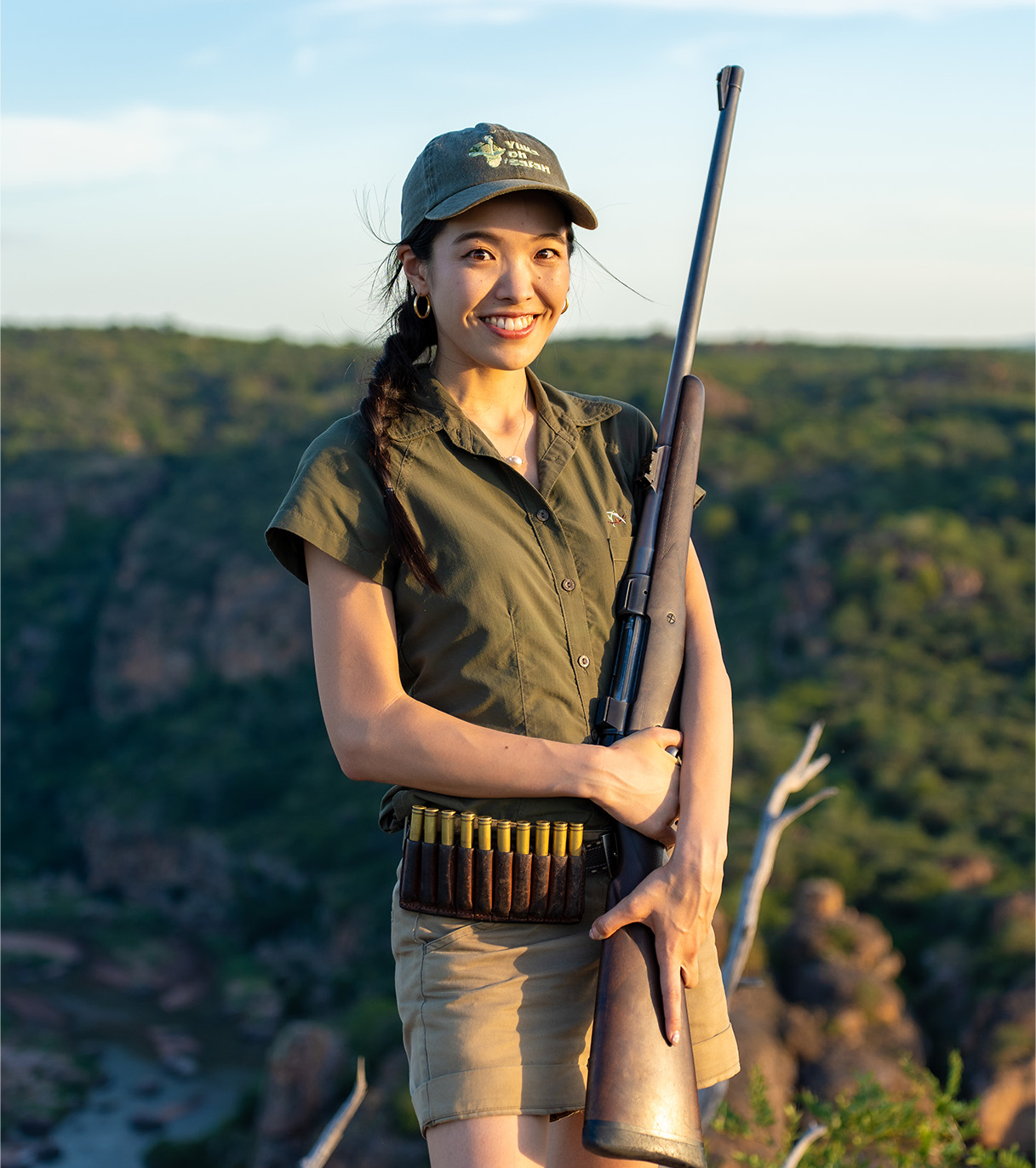
As a rule, it is required to carry a rifle on walking safaris. Ota practiced in shooting drills multiple times, but has been fortunate in that no animals have ever attacked anyone on her tours, hoping that the need to use rifles never arises.
©︎hugofilms
What kind of challenges do you encounter in your environmental and wildlife conservation activities in the South African savanna?
Various problems arise in different settings, but I feel that the core problem here is the disappearance of animal habitats. Animals with nowhere else to go are forced to approach human settlements, leading to conflicts between humans and wildlife. South Africa is a country rich in mineral resources—coal, gold, diamonds, emeralds, and numerous rare metals lie beneath its soil. If these valuable resources continue to be dug up, the savanna risks becoming an industrial zone. Massive plantations are also being developed, requiring large numbers of laborers. The area is urbanizing in the blink of an eye, and as infrastructure is built to transport materials, the habitats of these animals continue to shrink. Animals that have lost their homes sometimes approach villages, and when they eat livestock and ruin crops, the residents have no choice but to cull them.
Living in the savanna and witnessing what is happening must have provided you with many new insights and discoveries.
These are aspects that guests don’t typically see on a standard safari tour. That’s why, when I guide tours, I make an effort to highlight the real issues the savanna is facing. I try not to show only the good side. Many tourists come for relaxation or moving experiences, so the tour is not designed designed for them to learn about what’s actually happening here.
You post about environmental challenges and animal conservation activities on social media and other platforms. Have you faced any challenges in doing so?
When I post information for a Japanese audience, I often feel that it’s seen as someone else’s problem, something happening in a faraway country. The savanna areas around Greater Kruger National Park, where I work, have disappeared due to development and have been transformed into an orange plantation. The oranges produced are mainly exported to the Middle East and Asia, with Japan being a major importer. Even if people in Japan eat these oranges, they can’t imagine what is actually happening in the areas where they’re grown, and they have no opportunity to learn about it. Smartphones bought by consumers worldwide also contain minerals and rare metals mined from Africa, yet it’s hard for people to see how these issues relate to them personally. I hope that by sharing what I’ve seen and felt as a safari guide, I can help people feel more connected to these issues.

Poaching is also a serious problem facing the savanna. This photo shows a white rhino from the conservation area Ota worked. It was found in despair next to the bodies of its parents, who had been killed by poachers. The rhino calf was raised by humans and successfully released into the wild as an adult. However, it was tragically killed shortly after its release.
©Yuka on Safari α7 III, FE 100-400mm F4.5-5.6 GM OSS, ISO640, F5.6, 1/500s
How to contribute to South Africa as a Japanese safari guide

The African wild dog is listed as an endangered species and is known for its distinctive rounded ears.
©Yuka on Safari α7 III, FE 100-400mm F4.5-5.6 GM OSS, ISO320, F5.6, 1/400s

Participation in African wild dog conservation activities. The human activity is a major reason why they are facing extinction.
©Yuka on Safari α7 III, FE 100-400mm F4.5-5.6 GM OSS, ISO800, F5.6, 1/800s
How do you think you can make a difference by sharing the realities of your environmental and animal conservation activities in South Africa?
The destruction and fragmentation of natural habitats in the Kruger National Park area caused African wild dogs, an endangered species, to come into more frequent contact with human settlements, pushing them to the brink of extinction. Rabies spread from domestic dogs to the wild dogs that moved into villages. However, rapid and widespread rabies vaccinations have helped their numbers gradually recover. While African wild dogs are still an endangered species, Kruger National Park is the only area in the world where they are increasing in number. Though humans are the main cause of destruction of nature, we humans can also help solve the problems facing wildlife and the environment. There is hope for nature and wildlife to make a comeback if we apply human knowledge.
In your experience, what do you think is necessary for people to see environmental destruction and animal preservation as issues that personally relate to them and motivate them to act?
This is why I started crowdfunding activities. The first was a campaign for rhino conservation, and the second aimed to prevent conflict between elephants and humans so that they can live in harmony. I was grateful to see these campaigns receive more support than I initially expected. Thanks to these results, we were able to use some of the funding for conservation activities for desert lions, known as the ghost lions of Namibia.
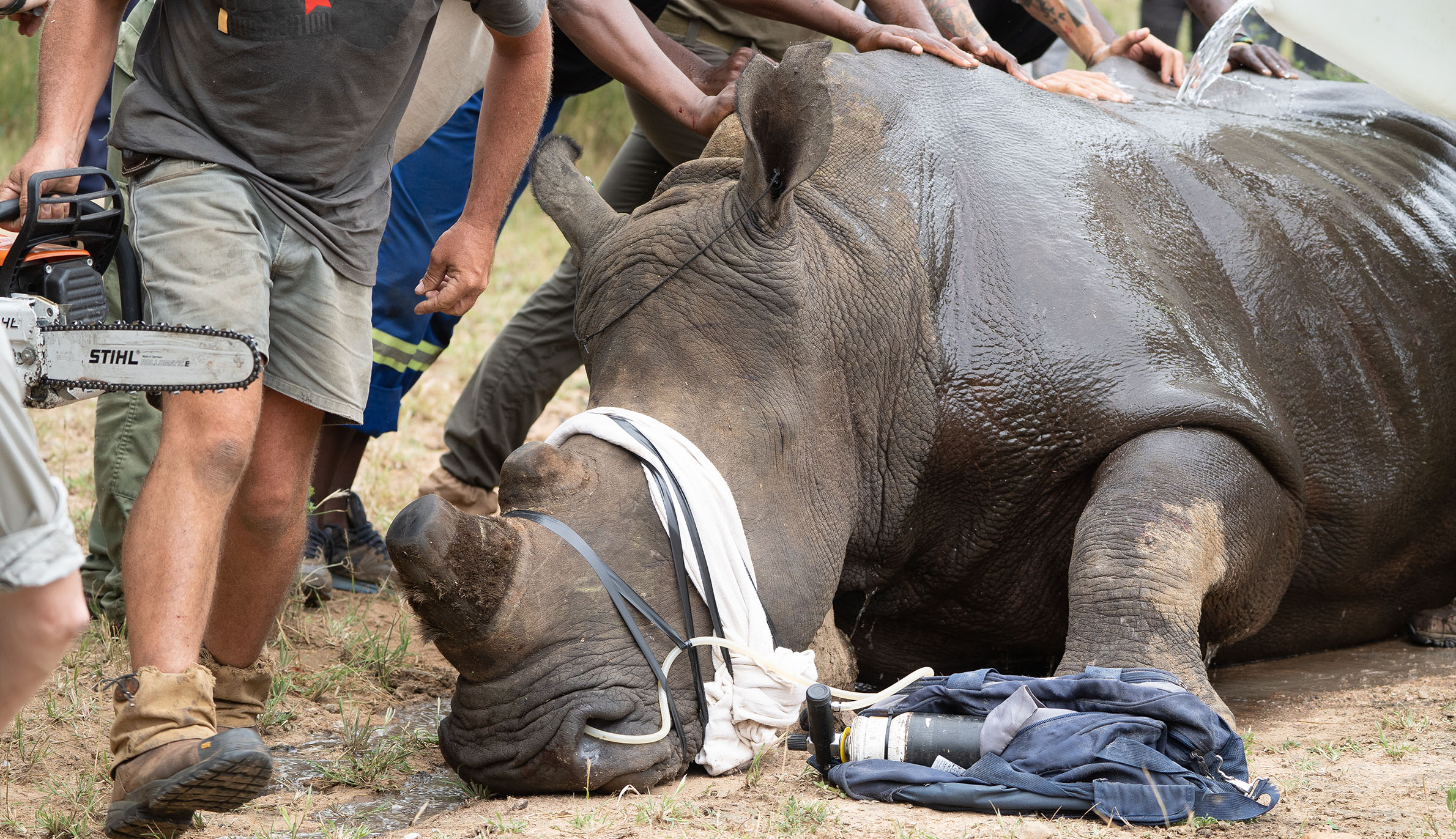
Rhino conservation activities, such as dehorning, help protect rhinos from poaching.
©Yuka on Safari α7 III, FE 100-400mm F4.5-5.6 GM OSS, ISO500, F5, 1/320s
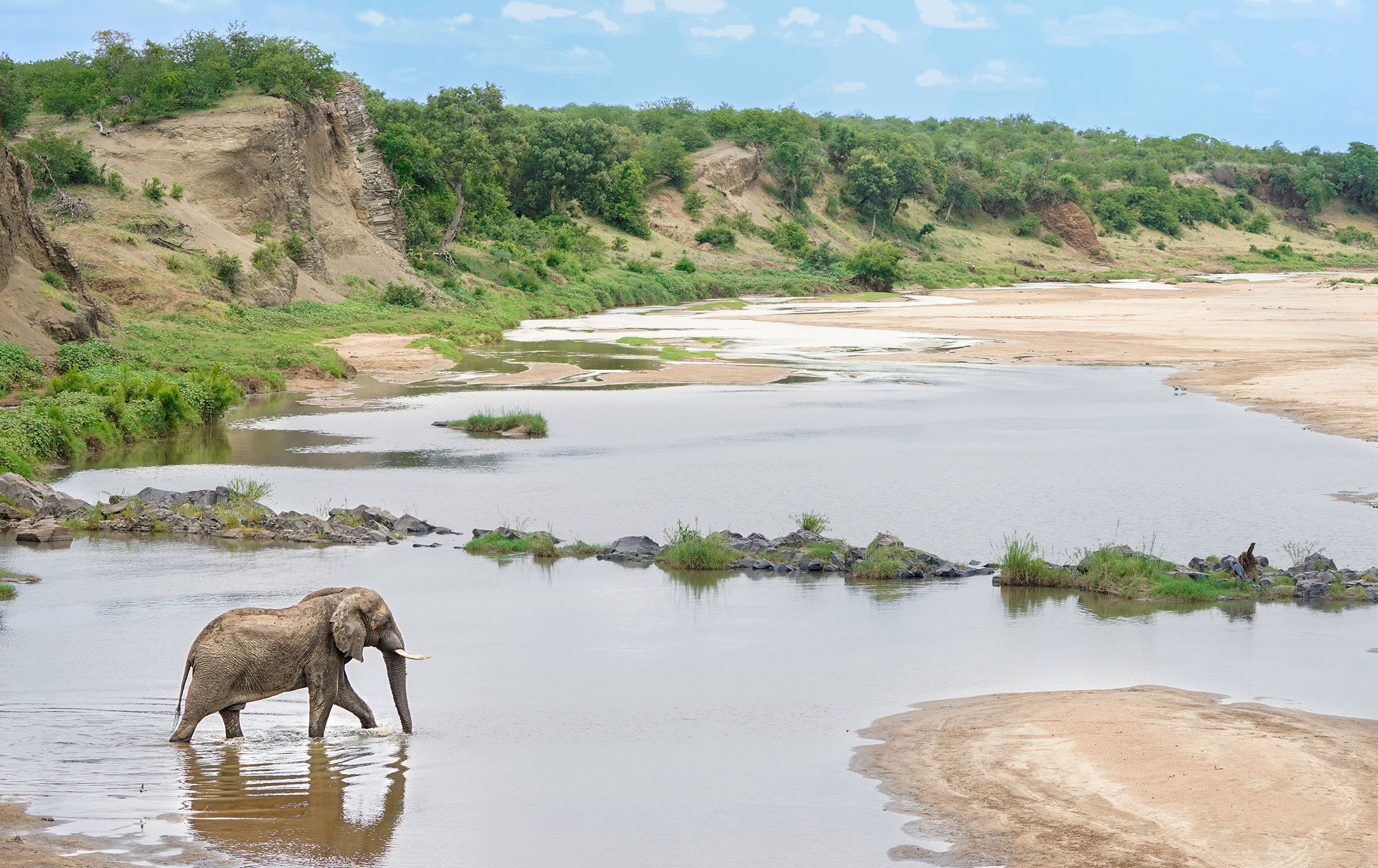
An elephant crossing a river. Elephants sometimes get injured when caught in poaching traps.
©Yuka on Safari α7 III, FE 100-400mm F4.5-5.6 GM OSS, ISO250, F5, 1/500s
Crowdfunding is an accessible way to support your projects.
It’s an indication of the desire to protect and support wildlife. I was overjoyed to see so many supporters. Donations can sometimes feel opaque, but in my crowdfunding campaigns, I give back to my supporters by live-streaming the conservation activities. Donors can see in real time when, where, who, and for what their contributions are being used, which makes it easier for them to feel like active participants. I believe this helps supporters personalize the fact that they are working on conservation activities together, and I will continue to create these opportunities for them. Some guests who join my safari tours continue to raise awareness after returning to their home countries by discussing environmental issues in their company newsletters or sharing messages alongside the photos of rhino conservation activities I post on Instagram. Every effort to spread information is deeply meaningful, regardless of its scale.
Will South Africa continue to be your base of activities as a safari guide?
I think I’ll stay in South Africa. Continuing to live in the vast nature of Africa is my dream, so I want to keep contributing to the savanna to make that a reality. I just want to accomplish what I can as a Japanese safari guide and tie that into achieving my dream. In 2024, I founded “Yuka on Safari,” a company in South Africa, with the aim of running my own lodge and holding eco tours—making me the first Japanese person to establish a lodge in the Kruger area. My goal is to employ locals while creating a base for Japanese tourists to stay at and provide a meaningful safari experience, which will contribute to South Africa.
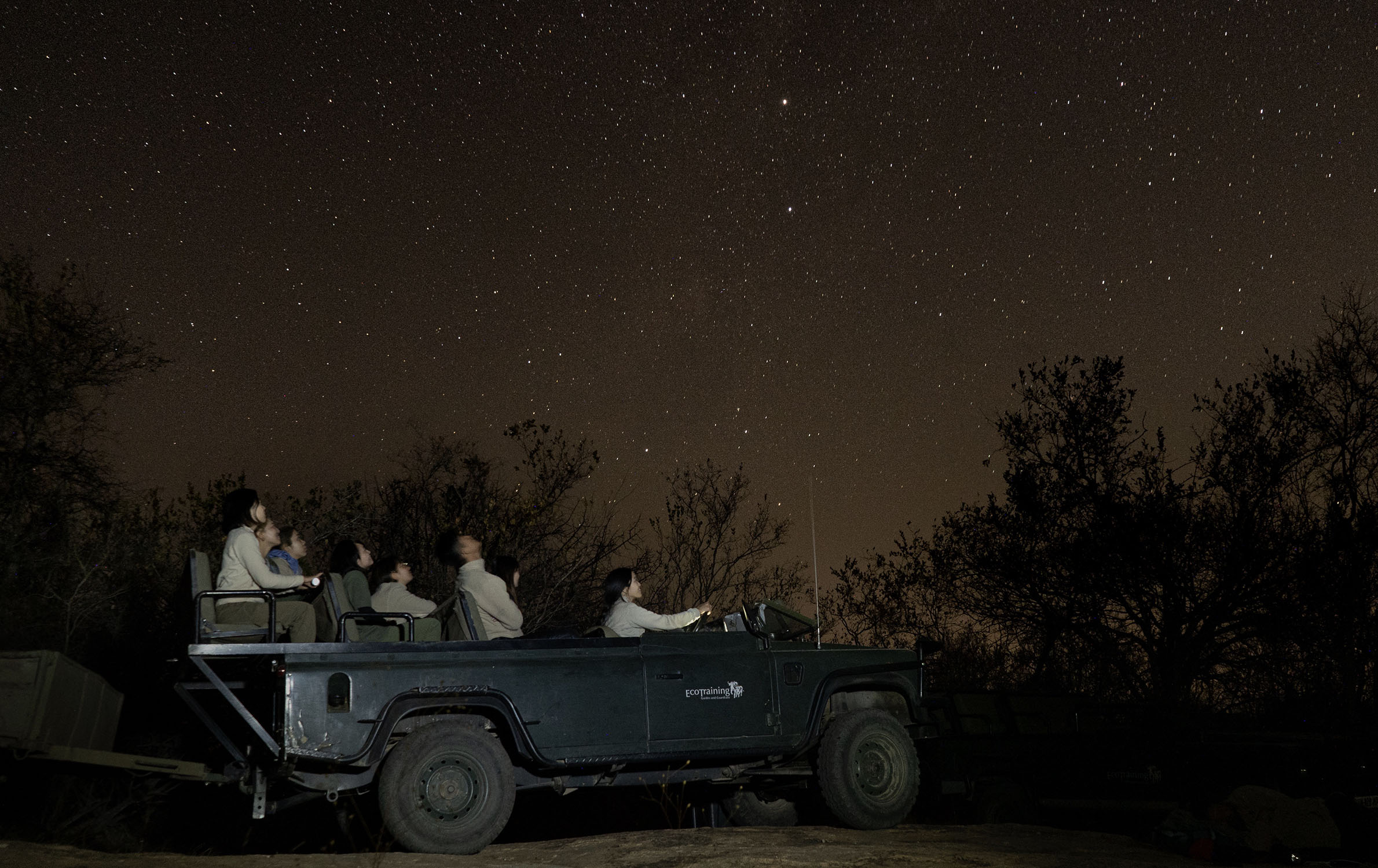
A night safari where you can see a vast sea of stars.
©Yuka on Safari α7 III, FE 28-70mm F3.5-5.6 OSS, ISO4000, F5.6, 25s
Pictures only a safari guide can take
What led you to use Sony’s cameras?
I received one of Sony’s cameras that my dad used when I first started living on the savanna in 2015. From then on, I became a fan of Sony’s cameras and now use the Alpha 7 III (α7 III). The weather on the savanna changes rapidly—it can rain suddenly, or you might encounter fine sand blowing around. I trust the α7 III because it’s never given me any trouble, despite continual use in this unforgiving environment. I’ve even taken my α7 III to the Namibian desert and the Himalayas.
What kinds of natural landscapes and animals do you take pictures of?
The landscapes I take pictures of include the sun and starry skies, and I take pictures of any animal I encounter, including the 114 species of mammals living on the savanna. Encountering a leopard or a lion is rare, so when I do, I’m thrilled to take numerous pictures of them. Even with elephants and impalas that I encounter every day, there are still expressions I want to capture. I want to share as many expressions as possible, such as the moment they yawn, their reaction when a bug lands on them, and when they socialize with companions.
The α7 III has a real-time Eye AF (autofocus) feature* that instantly detects the eyes of its subjects. I was deeply impressed by how effortlessly it allows me to capture pictures of animals. I primarily use the 100-400mm super-telephoto zoom lens, which is ideal for both close-ups and wide shots. Thanks to its high resolution, I can maintain beautiful image quality even after cropping a photo. Since I have to drive the safari car myself, I never know when I’ll have the chance to photograph the animals I adore. This makes it essential for me to have a camera and lens that I can ready quickly. The 100-400mm is the best fit for safaris, with its outstanding speed and mobility.
*This feature does not work on all animals. Focus accuracy may vary depending on the situation and subject. Usable features differ by camera type and software version. Please see the support page for compatible cameras.
https://www.sony.jp/ichigan/products/ILCE-7M3/feature_2.html
Camera Accessibility | Sony
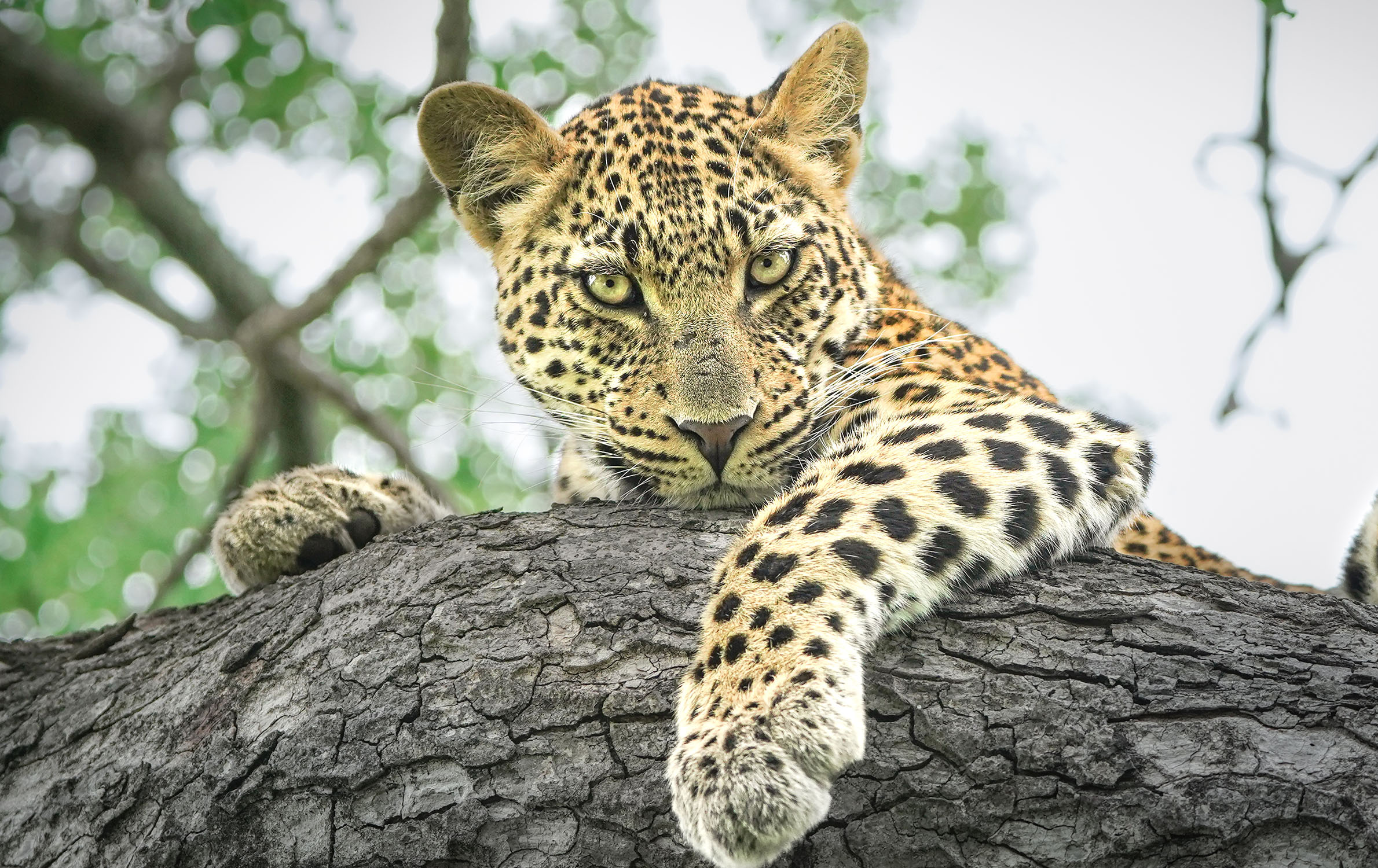
Although many animals live on the savanna, leopards and lions are not seen every day.
©Yuka on Safari α7 III, FE 100-400mm F4.5-5.6 GM OSS, ISO1000, F5, 1/500s
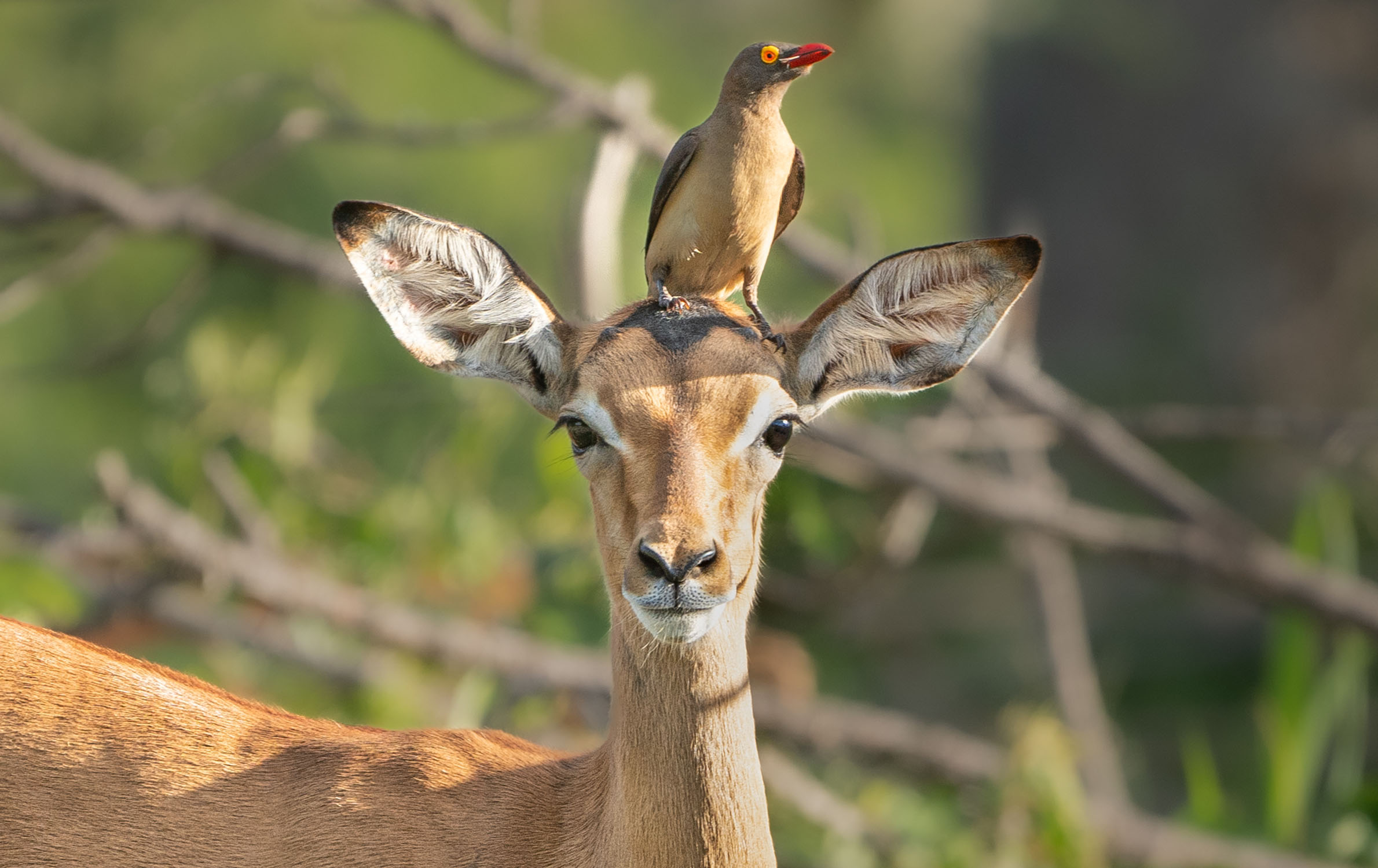
An oxpecker perched on the head of an impala, feeding on mites and fleas that live on impalas.
©Yuka on Safari α7 III, FE 100-400mm F4.5-5.6 GM OSS, ISO320, F5.6, 1/500s

The most memorable picture I took was of the first hunting scene I ever witnessed. An aging buffalo, likely with poor eyesight and sense of smell, accidentally wandered too close to a family of lions sleeping by a river. I vividly remember every detail, including how they went into hunting mode and the explosive burst as they sprang into action.
©Yuka on Safari α7 III, 100-400mm F4.5-5.6 OSS, ISO2000, F11, 1/2500s
Aside from being a safari guide and conservationist, you have actively shared information on social media and other platforms. You might have a different perspective than a professional photographer looking through the lens. What do cameras mean to you?
Since I’m not a professional photographer, I know I take pictures from a safari guide’s perspective. Spending each day in the same environment as wildlife allows me to intimately experience the changing seasons, the animals’ breathing, and their emotional shifts. For example, the desperate expression of a lioness repeatedly attempting to hunt for her cubs or the excitement of an elephant calf as it rushes toward water in the parched dry season of the savanna. My wish is to share these moments as they are through my pictures.
I don’t just want to capture beautiful images of wildlife. I also want to highlight the playful sides they show and, at times, the harsh realities of the environmental challenges they face. I would be happy if my pictures could inspire others to take an interest in the world of animals living in distant lands.

